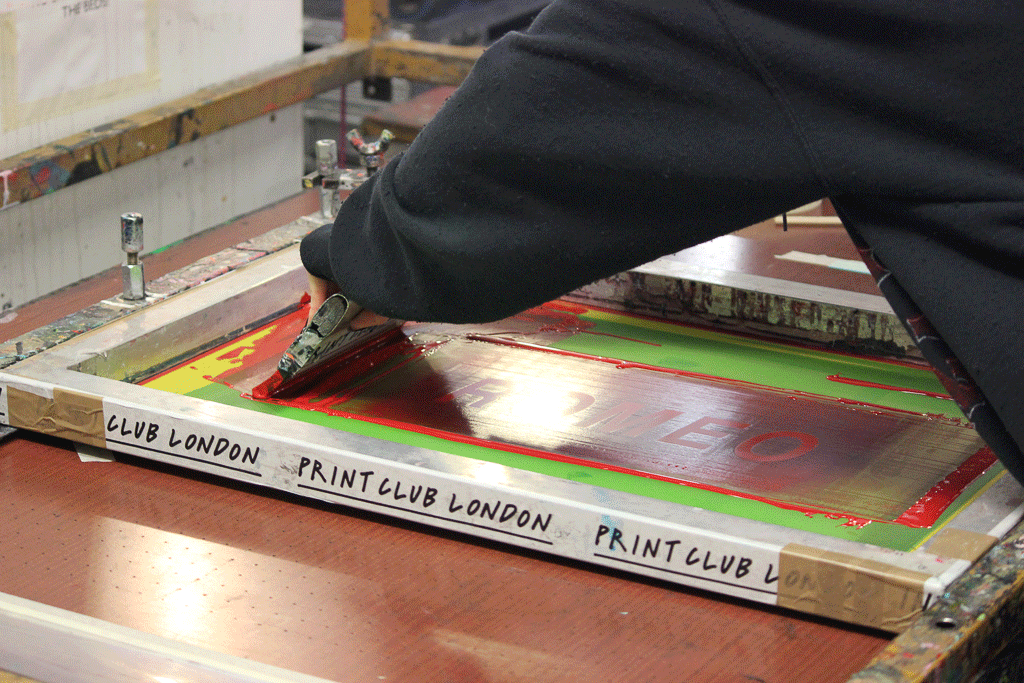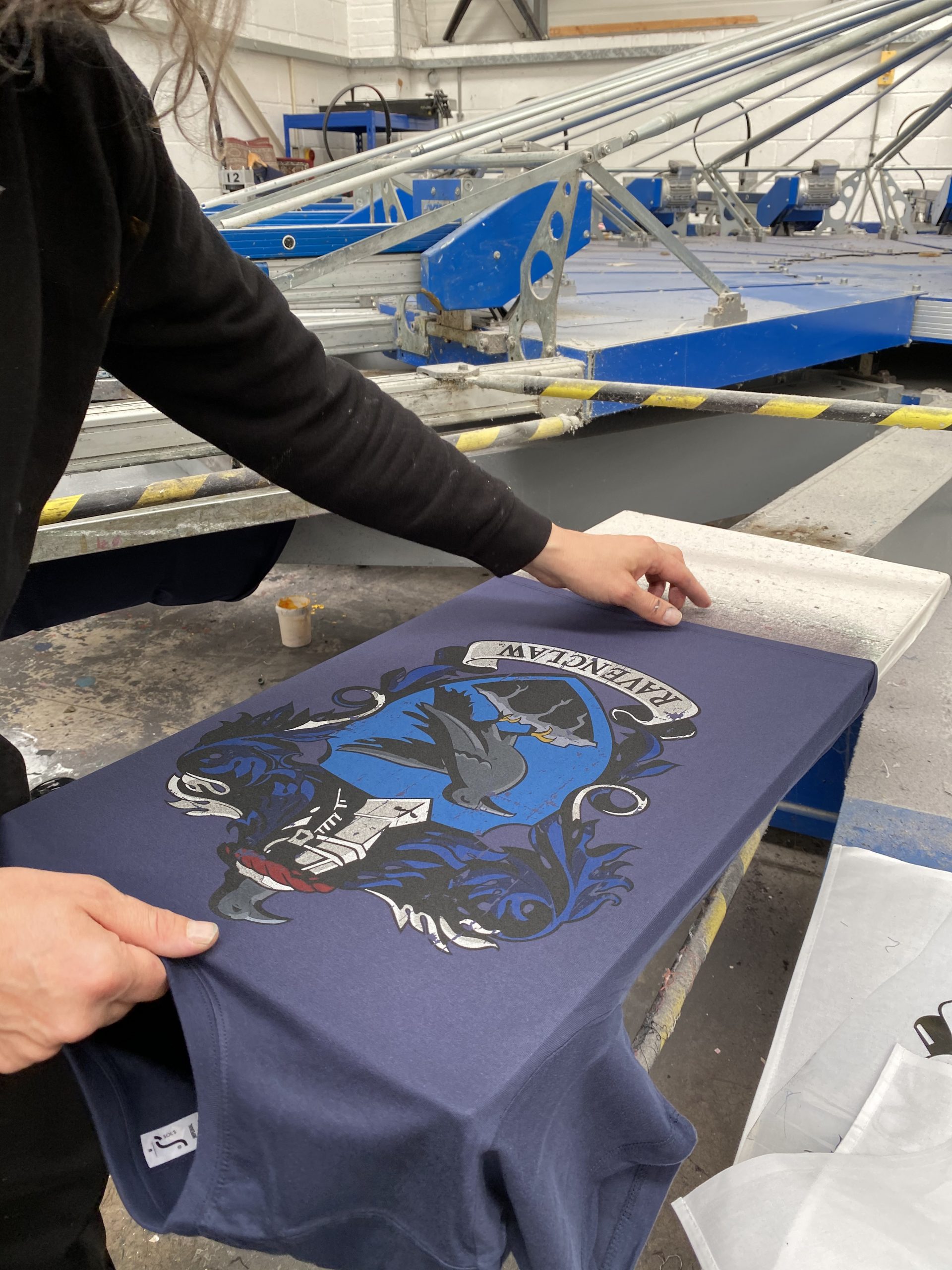ChatGPT said: How 10:9 Design Abilene is serving the community
Wiki Article
The Important Guide to Understanding Screen Printing and Its Versatile Uses
Screen printing has an abundant background that goes back to old times, progressing right into an advanced technique used throughout different sectors today. This guide explores the details of the screen printing process, describing its applications in home, advertising, and fashion décor - 10:9 Design Screen Printing Texas. Understanding these fundamentals can open innovative capacity for both business and creative tasks. The adhering to sections will certainly expose vital ideas and techniques to improve one's screen printing endeavorsThe Background of Screen Printing
Screen printing has roots that trace back centuries, its advancement reflects the artistic and technical innovations of different societies. Originating in ancient China, the strategy was originally used for embellishing textiles and later spread to Japan, where it became essential to Ukiyo-e woodblock printing. The method moved to Europe in the 18th century, where it acquired appeal among artisans and commercial printers. The development of image solution in the 20th century reinvented screen printing, enabling more detailed styles and better effectiveness. Musicians like Andy Warhol further propelled its appeal, using the tool to produce legendary jobs that blended commercialism and art. By the late 20th century, screen printing had actually established itself as a functional strategy, used in vogue, advertising and marketing, and art. Today, it remains to develop, incorporating electronic modern technology and increasing its applications across different markets.The Screen Printing Refine Explained
Screen printing transforms imaginative visions right into tangible layouts through a series of accurate steps. Originally, an image is produced and afterwards moved onto a screen, typically constructed from great mesh fabric stretched over a frame. A light-sensitive emulsion is put on the screen, which is revealed to light, solidifying in locations not covered by the image. After washing out the unhardened emulsion, a pattern is formed.Next, the screen is put over the substrate, whether it be material, paper, or another product. Ink is then pushed with the open locations of the pattern utilizing a squeegee, transferring the design onto the substratum below. This procedure can be repeated for numerous colors, requiring different displays for every hue. Finally, the published product is treated utilizing heat to guarantee the ink sticks effectively, leading to a resilient, vibrant style on-line.
Kinds of Screen Printing Techniques

Additionally, specialized methods, such as discharge screen printing, remove color from the fabric to create softer prints, while aluminum foil screen printing applies metal aluminum foil to attain a shiny finish (10:9 Design Embroidery). Each strategy provides distinct features, satisfying various creative requirements and manufacturing scales, eventually increasing the opportunities within the screen printing domain name
Applications of Screen Printing in Different Industries

Furthermore, the signage and marketing industries make use of screen printing for developing eye-catching displays and banners. This technique allows for vibrant shades and intricate styles that capture interest. In electronic devices, screen printing is utilized for applying conductive inks to motherboard, important for part connections. Additionally, the home décor market accepts screen printing to create distinctive layouts on fabrics and wall surface art. Generally, screen printing serves as a vital device across varied fields, boosting items with personalized and visually attractive graphics.
Tips for Successful Screen Printing Projects
While embarking on a screen printing job, careful focus to information can significantly enhance the last end result. First, choosing high-quality materials is vital; this consists of the screen, inks, and substrates. Utilizing appropriate mesh counts can affect ink deposition and information resolution. Prep work is equally important; comprehensive cleaning of screens and correct exposure times guarantee crisp prints.Next off, exact enrollment is essential for multi-color prints. Utilizing alignment devices can assist achieve specific layering. In addition, testing prints on scrap materials prior to manufacturing assists recognize potential issues without losing sources.

Often Asked Concerns
What Products Are Finest for Screen Printing on Material?
Cotton and polyester blends are suitable for screen printing on material because of their toughness and ink absorption. Furthermore, specialty textiles like silk or canvas can create special structures and surfaces, enhancing the overall layout top quality.Just how Do I Tidy and Maintain Screen Printing Devices?
To clean and preserve screen printing equipment, one must frequently clean displays with proper solvents, examine squeegees for wear, lubricate moving parts, and shop all items in a dry, dust-free setting to lengthen their life expectancy.What Are the Environmental Impacts of Screen Printing?
Screen printing can have substantial ecological effects, including chemical waste from inks and solvents, next page water use throughout cleaning processes, and power usage. Sustainable techniques and green materials are vital for minimizing these unfavorable effects.Can Screen Printing Be Done at Home Successfully?
Screen printing can be efficiently done at home with the right products and techniques. Enthusiasts can create top quality prints, though success depends upon their ability degree, devices, and understanding of the procedure entailed.
What Are the Costs Connected With Beginning a Screen Printing Service?

Beginning view it a screen printing service entails costs for equipment, materials, and work area. First costs typically vary from a few hundred to several thousand dollars, relying on the range, quality of equipment, and desired production capability.
Screen printing has an abundant background that dates back to old times, advancing into an advanced strategy made use of throughout different sectors today. An additional strategy, rotary screen printing, employs cylindrical displays, facilitating continuous printing on fabric rolls, thus improving effectiveness for massive manufacturings. Furthermore, specialized strategies, such as discharge screen printing, remove dye from the fabric to create softer prints, while foil screen printing applies metal aluminum foil to attain a glossy coating. In the style market, screen printing is commonly utilized to produce dynamic designs on apparel, enabling page brands to display their one-of-a-kind designs. Cotton and polyester blends are excellent for screen printing on fabric due to their durability and ink absorption.
Report this wiki page